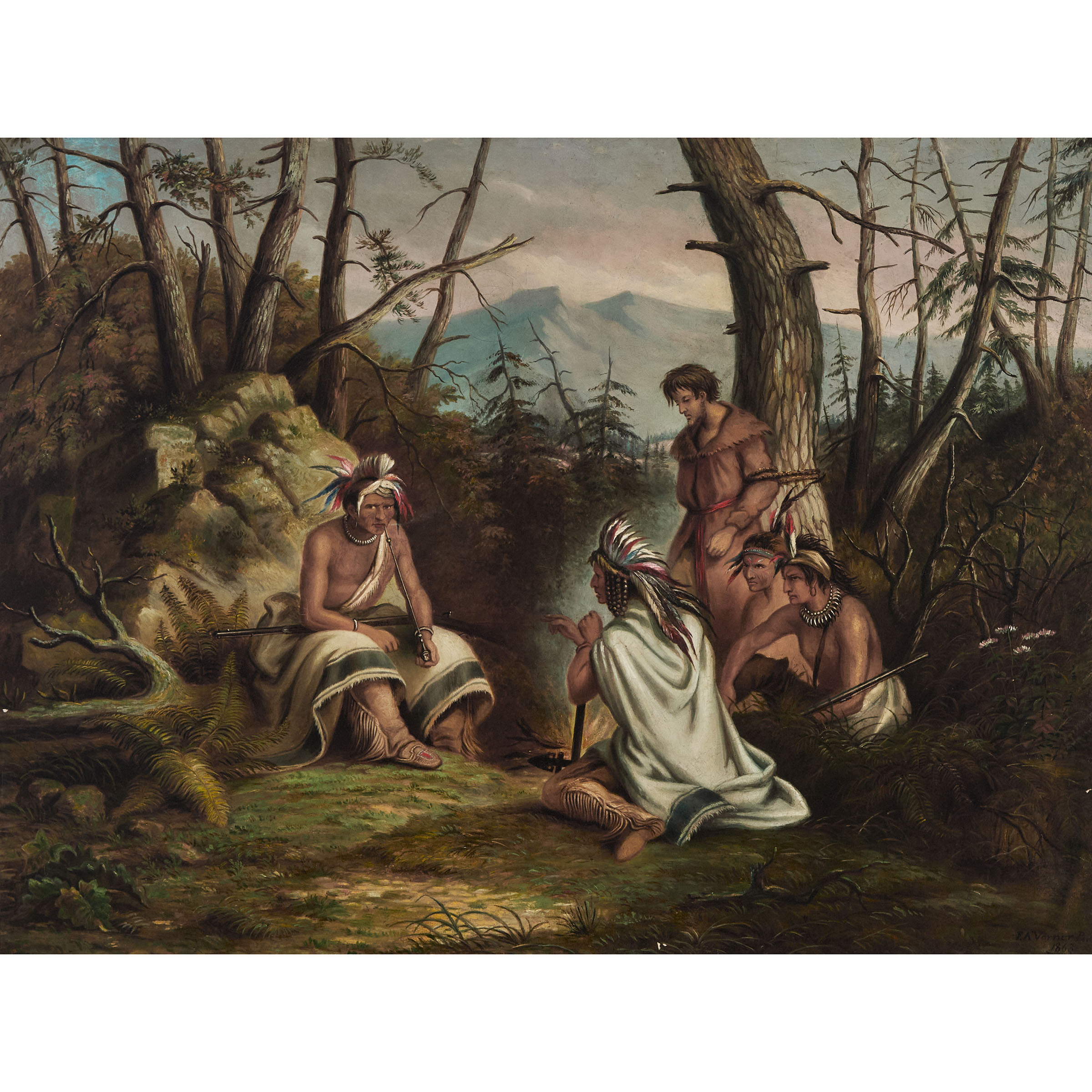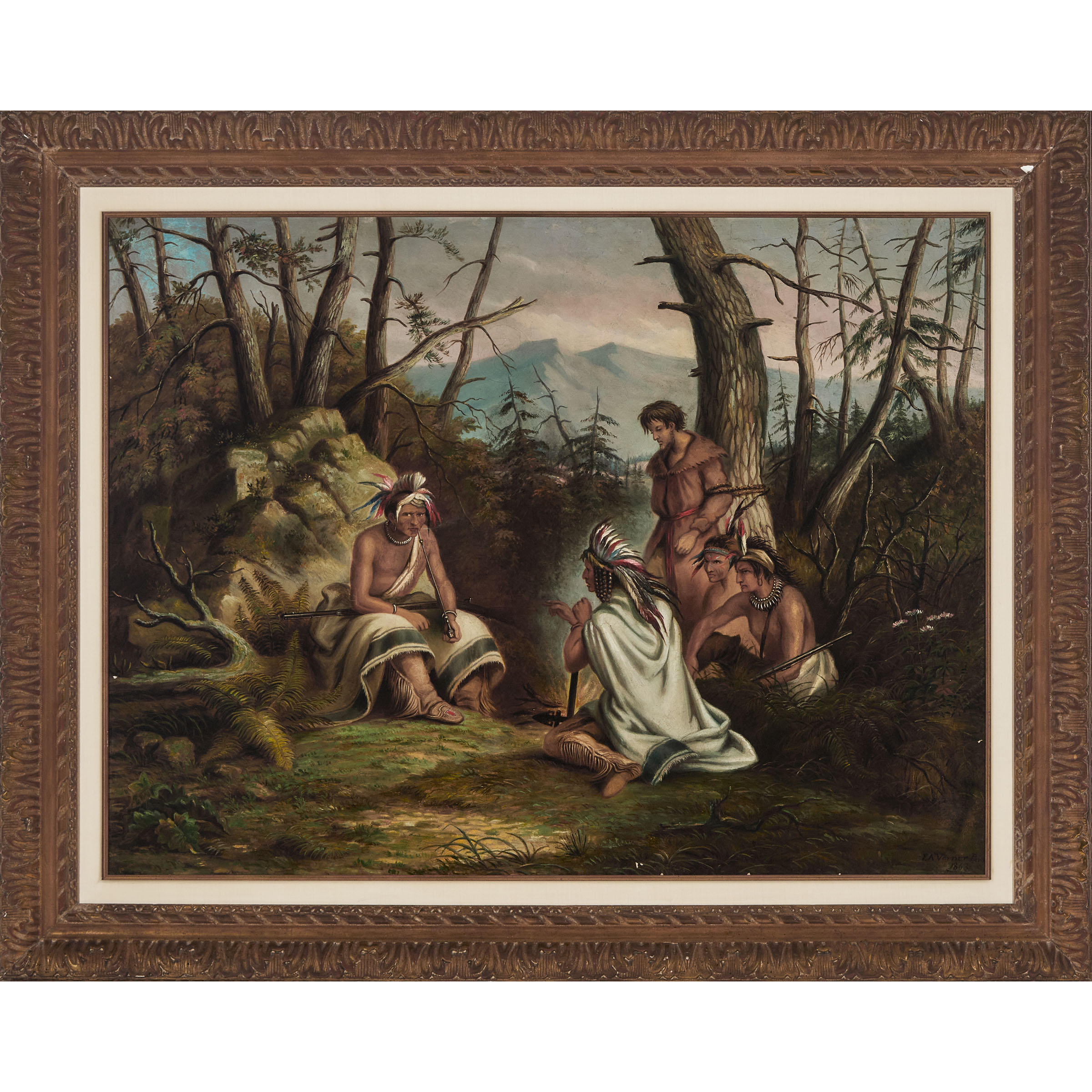Lot 41
Frederick Arthur Verner, OSA, ARCA (1836-1928), Canadian, after Felix Octavius Darley (1822-1888), American

Lot 41 Details
Frederick Arthur Verner, OSA, ARCA (1836-1928), Canadian, after Felix Octavius Darley (1822-1888), American
INDIANS DEBATING THE FATE OF THEIR CAPTIVE, 1863
oil on canvas
signed and dated
33.25 x 42 in — 42 x 106.7 cm
Estimate $20,000-$30,000
Additional Images

Provenance:
Waddington's Auctioneers, The Mulholland Collection, Toronto, ON, 4 Mar 1982, lot 31;
Collection of Sir Christopher and Lady Ondaatje
Literature:
Joan Murray, The Last Buffalo: The Story of Frederick Verner, Painter of the Canadian West (Toronto: Pagurian Press, 1984), 39 reproduced in b/w as Indians Debating the Fate of Their Captive.
Note:
Early in his career and before his sketching trips in the 1870s and onwards, Verner was known to paint from photographs, engravings and other reproductions. He studied the work of other artists, particularly the work of American illustrator Felix Octavius Darley. Darley had published an engraving entitled “Holding Council on the Fate of a White Prisoner” in The Illustrated London News in 1860, which Verner used as the basis for this painting. Joan Murray points out that Darley’s version might too have been a copy of a watercolour by an anonymous artist, possibly French. (1)
Verner and other artists of the day were fascinated by the First Nations’ populations, drawn in by glimpses of their culture—so very different from their own—and by their plight as Western culture continued to edge them out. The article which accompanied Darley’s illustration spoke of the rapid disappearance of First Nations people from the continent, and Murray suggests that “as a former military man, [Verner] would have been sympathetic with the tearless stoicism and reckless daring shown by the Indians described in the article.” (2)
Some of the details of costume are historically inaccurate, suggesting that the original work may have been created in a studio or developed from other sketches, and the composition reflects a populist view, if not factual, of First Nations culture. Still, this painting should be viewed as an important step in Verner’s artistic development. Copying was a major part of any artistic education, and Verner had a keen eye for detail. Working from a two-dimensional image was Verner’s preferred method, even in his later career. It would be another ten years before Verner went on his first major sketching trip, which allowed him to observe and depict the details of his sitters with greater accuracy. The sketches he would make himself on those trips would form the basis of his later work, but when this work was painted, Verner had to content himself with the limited information he had at hand.
1) Joan Murray, The Last Buffalo: The Story of Frederick Arthur Verner, Painter of the Canadian West. (Toronto: Pagurian Press, 1984), 39.
2) Murray, 39






